As 2025 unfolds, cloud computing continues to evolve—not just in terms of capabilities, but also in how companies structure and govern their cloud environments. One trend gaining significant momentum is the adoption of multi-cloud strategies, where businesses leverage services from multiple cloud providers instead of relying on just one.
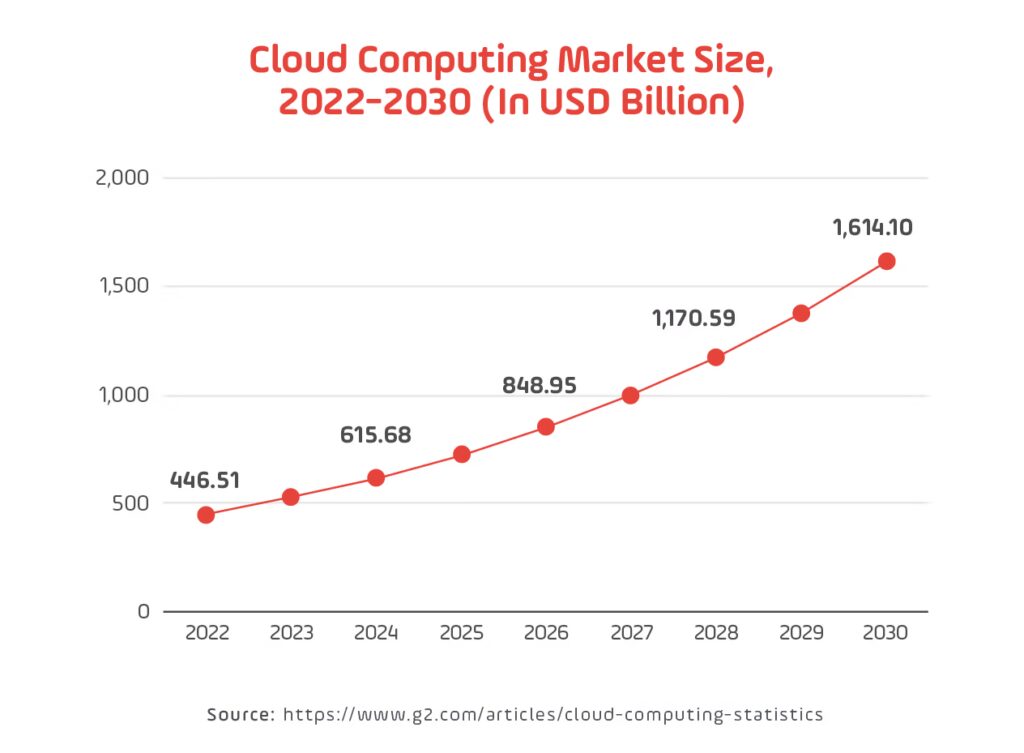
According to a 2024 Gartner report, over 92% of large enterprises now operate in a multi-cloud environment, a sharp increase from just a few years ago. Companies are no longer content with putting all their workloads into one basket—they want the freedom to pick and choose, optimize performance, and reduce their risk exposure.
At Growin, we’re working closely with businesses navigating these decisions—helping them choose cloud strategies that scale with their goals, while avoiding the common pitfalls of overcomplication and misalignment. In this post, we’ll dive into the rise of multi-cloud, explain why it matters in 2025, and break down the pros, cons, and key considerations for businesses today.
What Is a Multi-Cloud Strategy?
A multi-cloud strategy involves utilizing cloud services from multiple providers — such as Amazon Web Services (AWS), Microsoft Azure, Google Cloud Platform (GCP), and others — to meet various business and technical requirements. This approach allows organizations to leverage the unique strengths of each provider, avoid vendor lock-in, enhance resilience, and optimize performance and costs.
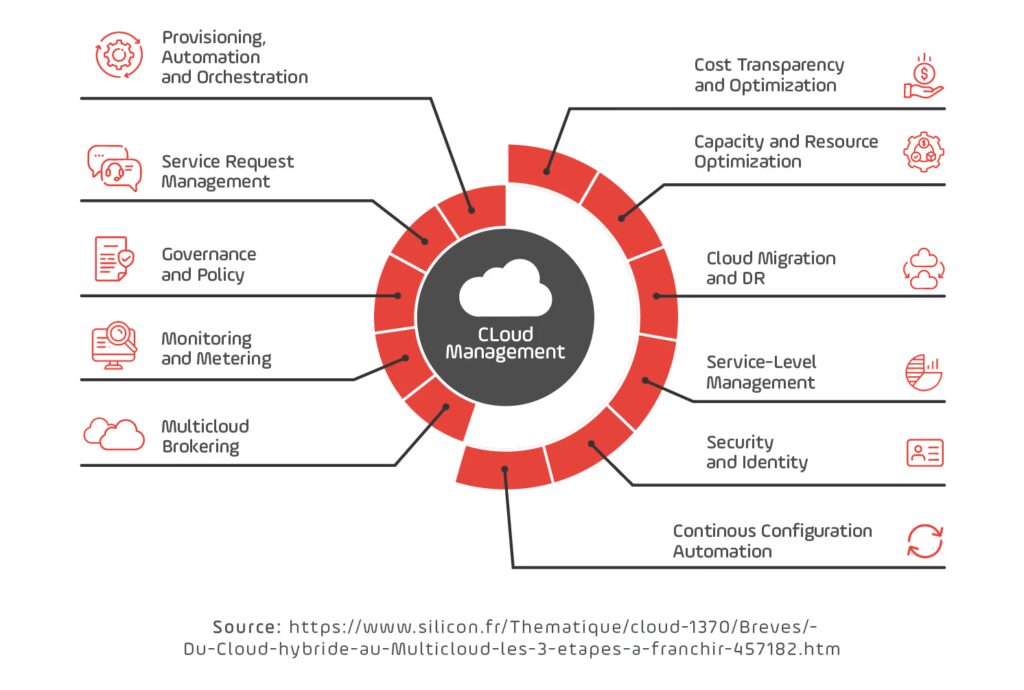
Key Characteristics:
- Diverse Service Utilization: Employing different cloud providers for specific services or workloads based on their strengths.
- Avoidance of Vendor Lock-In: Maintaining flexibility by not being tied to a single provider.
- Enhanced Resilience: Distributing workloads across multiple clouds to mitigate the risk of downtime.
- Compliance and Data Sovereignty: Meeting regulatory requirements by choosing providers with data centers in specific regions.
Real-World Case Studies
1. Fidelity Investments
Fidelity Investments, a leading financial services firm, adopted a multi-cloud strategy to enhance its digital transformation efforts. By migrating thousands of critical applications to multiple cloud providers, Fidelity aimed to achieve greater agility, scalability, and resilience in its operations.
2. Airbus
Airbus, the aerospace giant, implemented a multi-cloud approach to support its global manufacturing processes. By leveraging AWS, Azure, and Google Cloud, Airbus enhanced its ability to perform complex simulations, data analytics, and collaborative projects across different regions.
3. 1CloudHub Client
A client of 1CloudHub transitioned from a single-cloud (Azure) setup to a multi-cloud environment by integrating AWS.This shift aimed to reduce dependency on a single provider and to leverage AWS’s robust and agile cloud services alongside existing Azure components.
Current Statistics
- According to a Flexera report, 89% of enterprises have embraced multi-cloud strategies, indicating a significant shift towards diversified cloud environments.
- G2 reports that global spending on cloud services is projected to reach $1.3 trillion in 2025, reflecting the growing reliance on cloud infrastructures.
- Spacelift predicts that by 2025, half of all data will be stored in the cloud, up from 25% in 2015, underscoring the increasing adoption of cloud storage solutions.
A multi-cloud strategy offers organizations the flexibility to choose the best services from various providers, enhancing performance, resilience, and compliance. Real-world implementations by companies like Fidelity Investments and Airbus demonstrate the tangible benefits of this approach. As cloud adoption continues to rise, understanding and effectively implementing a multi-cloud strategy becomes increasingly crucial for businesses aiming to stay competitive in the digital landscape.
Single Cloud vs. Multi-Cloud vs. Hybrid Cloud: Understanding the Differences
Cloud strategies aren’t one-size-fits-all. Depending on your company’s size, industry, and infrastructure maturity, your ideal setup may be a single cloud, a multi-cloud, or a hybrid cloud strategy. Let’s break them down and compare their strengths, use cases, and trade-offs.
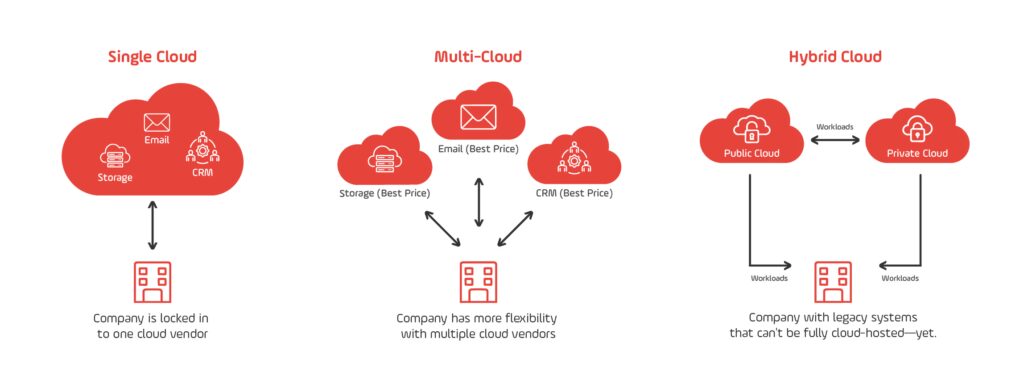
Single Cloud: One Provider, One Ecosystem
Definition: All cloud services—compute, storage, databases, etc.—are run through a single cloud provider (e.g., AWS, Azure, or GCP).
- Simpler to manage and integrate.
- Deep ecosystem compatibility.
- High vendor lock-in risk.
- Limited flexibility or failover options.
Use Case: Startups or SMBs looking for ease of use, speed to market, and a unified experience.
Multi-Cloud: Choose the Best from Each
Definition: Leveraging services from two or more cloud providers simultaneously. Each cloud may be used for specific workloads or regions.
- Avoid vendor lock-in.
- Use best-of-breed services (e.g., AI from GCP, compute from AWS).
- Boost resilience and uptime.
- Increased complexity and skill demands.
- Harder to standardize governance and security.
Use Case: Enterprises with performance, compliance, or regional needs across platforms.
Hybrid Cloud: Mix of Public and Private
Definition: A setup that combines on-premises infrastructure (or a private cloud) with public cloud resources. These systems are integrated and often used for different parts of the same workload.
- Ideal for gradual cloud migration.
- Helps meet strict compliance or legacy system requirements.
- Keeps sensitive data on-prem.
- Expensive to maintain and integrate.
- Not fully cloud-native in many cases.
Use Case: Government, healthcare, or finance companies with legacy systems that can’t be fully cloud-hosted—yet.

Often, hybrid cloud is a stepping stone—not a final destination. Many businesses start with hybrid cloud (to integrate legacy systems) and evolve into multi-cloud as they modernize workloads.
Including hybrid cloud in this section not only adds value—it educates readers on the natural progression of cloud maturity.
Why Multi-Cloud Is Gaining Momentum in 2025
In 2025, the adoption of multi-cloud strategies has accelerated significantly, driven by a confluence of technological advancements, regulatory shifts, and evolving business needs. Here’s an in-depth look at the key factors propelling this trend:
1. Avoidance of Vendor Lock-In
Relying solely on a single cloud provider can lead to challenges such as limited flexibility, potential service outages, and pricing constraints. By adopting a multi-cloud approach, businesses can mitigate these risks by distributing workloads across multiple providers, ensuring greater autonomy and adaptability.
2. Access to Best-of-Breed Services
Different cloud providers offer unique strengths:
- AWS: Renowned for its vast array of services and global infrastructure.
- Azure: Excels in integrating with Microsoft products and enterprise solutions.
- Google Cloud: Leads in data analytics and machine learning capabilities.
By leveraging the strengths of multiple providers, businesses can optimize performance and innovation.
3. Enhanced Resilience and Redundancy
Distributing workloads across multiple cloud platforms ensures that if one provider experiences an outage, others can maintain operations, thereby enhancing business continuity and reducing downtime.
4. Regulatory Compliance and Data Sovereignty
With increasing global data protection regulations, such as the General Data Protection Regulation (GDPR) in Europe, businesses are compelled to store and process data within specific jurisdictions. Multi-cloud strategies enable organizations to select providers that align with regional compliance requirements.
5. Cost Optimization
By evaluating and selecting services from different providers based on pricing and performance, businesses can achieve cost savings. This approach allows for more strategic budgeting and resource allocation.
Real-World Examples
European Enterprises Seeking Digital Sovereignty
Amid rising geopolitical tensions and concerns over data sovereignty, European companies are increasingly reconsidering their cloud provider choices. OVHCloud’s CEO highlighted that strategic autonomy has become a significant factor in selecting cloud partners, moving beyond purely technical criteria. This shift indicates a broader trend of European firms aiming to bolster digital sovereignty and reduce dependency on American cloud technologies.
Google’s Acquisition of Wiz to Enhance Multi-Cloud Security
Recognizing the complexities of securing multi-cloud environments, Google announced its intention to acquire cybersecurity startup Wiz for $32 billion. This strategic move aims to integrate advanced security tools with Google Cloud’s services, addressing the growing need for robust security in multi-cloud deployments.
Pros of a Multi-Cloud Approach
Let’s dig into the top benefits that multi-cloud offers—especially when implemented with a clear strategy.
1. Flexibility and Freedom of Choice
The core appeal: control. With a multi-cloud setup, you’re not stuck with a single ecosystem. You can choose services that suit your app’s needs, user base, or regional reach.
2. Performance Optimization by Region or Function
Running services in multiple cloud regions reduces latency and improves user experience. You can also run specific workloads on the most efficient platform—e.g., GCP for analytics-heavy operations.
3. Resilience and Redundancy
In a world where uptime is currency, redundancy is non-negotiable. Multi-cloud lets you architect for failover, disaster recovery, and service continuity in ways single-provider setups can’t.
4. Potential Cost Savings
Though complex, multi-cloud can reduce costs by:
- Avoiding egress charges by distributing workloads intelligently.
- Taking advantage of different pricing models.
- Leveraging spot instances and reserved capacity across clouds.
5. Greater Control Over Compliance and Governance
Multi-cloud allows for strategic decisions around where data lives, how it’s handled, and which cloud meets local legal and ethical standards.
For more on how developers are preparing for these responsibilities, check out:
https://www.growin.com/blog/essential-questions-javascript-developers-2024/
Real-World Challenges of a Multi-Cloud Approach
While multi-cloud adoption is growing rapidly, it brings new layers of complexity that businesses must navigate with intention. The most significant challenges aren’t just technical—they’re operational, organizational, and strategic.
1. Post-Migration Complexity and Optimization
Moving to the cloud is just the beginning—making it work efficiently is the real challenge. In multi-cloud setups, teams must optimize workloads across different architectures, interfaces, and performance profiles. This demands deep expertise and proactive monitoring from day one.
Without a unified optimization strategy, organizations risk creating cloud silos rather than a truly integrated environment.
2. Performance Bottlenecks Across Environments
Not all clouds are created equal—latency, throughput, and uptime guarantees differ by provider and region. As workloads get distributed, keeping them responsive and resilient becomes harder.
Multi-cloud success requires architectural decisions that account for inter-cloud traffic, caching layers, and potential failover delays.
3. Financial Overhead and Unpredictable Costs
Multi-cloud can be more expensive, not less — especially when teams lack centralized cost governance. Egress fees, duplicated services, or idle instances across providers often lead to budget surprises.
Cloud cost management (FinOps) needs to evolve alongside your architecture, not after it.
4. Longer Rollouts, Slower Deployments
Introducing multiple cloud providers means longer setup times, more complex CI/CD pipelines, and fragmented DevOps workflows. Without strong orchestration tools and automation, teams may spend more time deploying infrastructure than delivering value.
Automation and Infrastructure-as-Code tools like Terraform or Crossplane can help—but they require maturity to implement well.
5. Team Expertise and Learning Curve
Each platform has its own mindset, services, quirks, and tools. Successfully managing multi-cloud environments often demands a broader skill set than many teams currently have.
Organizations must prioritize ongoing training, certifications, or strategic partnerships—or risk creating operational bottlenecks.
Under the Surface: It’s About Organizational Readiness
What the most common multi-cloud challenges reveal isn’t just technical difficulty—it’s that multi-cloud is a business transformation, not a simple tech stack decision. It requires:
- A clear vision
- Process re-alignment
- Cross-functional collaboration
- And often, a cultural shift
Multi-cloud is powerful—but only if you’re prepared to lead with strategy, not just infrastructure.
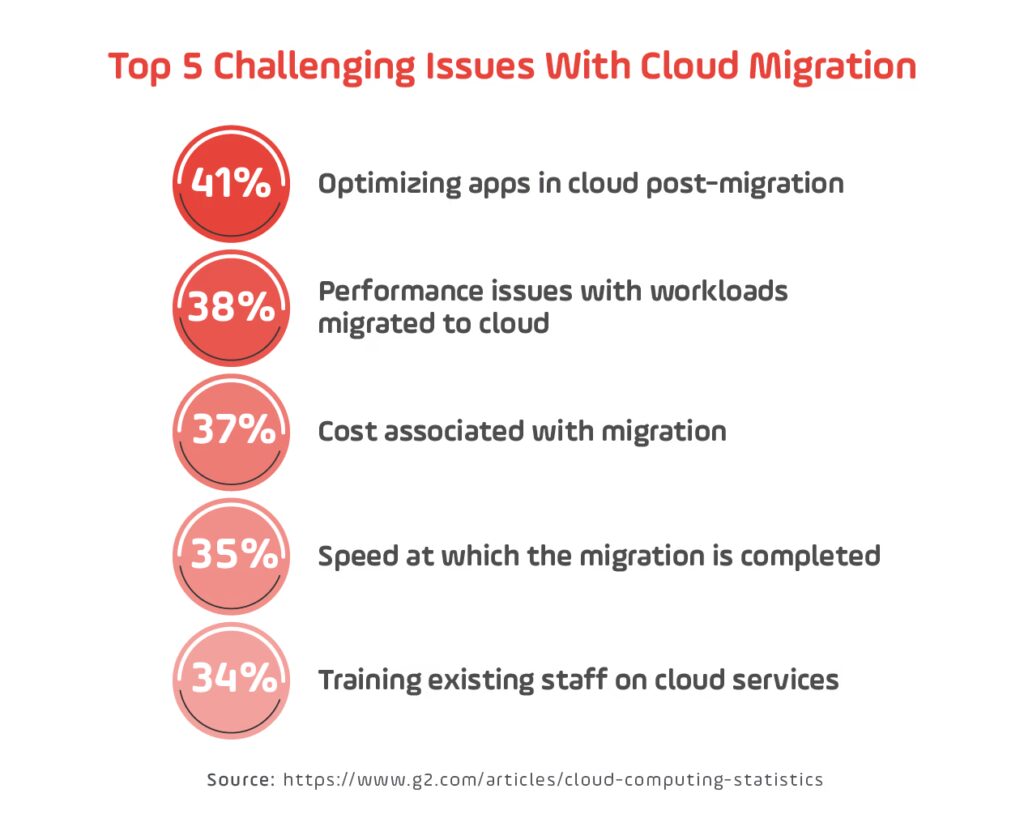
Key Considerations Before Adopting Multi-Cloud
1. Business Objectives and Use Case Alignment
Before choosing multi-cloud, companies must ask:
“What problem are we solving with this approach?“
Not every organization benefits equally. For some, a single cloud may meet all operational and growth needs. Multi-cloud makes the most sense when:
- You operate in multiple regions with compliance constraints.
- You need best-in-class tools from different providers.
- You require high availability or disaster recovery strategies that span platforms.
Tip: Define specific, measurable goals (e.g., “reduce cloud downtime by 30%” or “expand to 3 new markets under GDPR”) before investing in multi-cloud complexity.
2. Tooling and Orchestration
2.1. Infrastructure as Code (IaC)
IaC allows teams to define and provision infrastructure using code rather than manual configuration. In multi-cloud setups, this ensures consistency and repeatability across cloud environments.
Top Tools:
- Terraform (by HashiCorp): The de facto standard for declarative IaC across AWS, Azure, GCP, OCI, and more.
- Pulumi: Offers IaC using general-purpose languages like TypeScript, Python, Go, and C#.
- Crossplane: A Kubernetes-native approach that enables cloud infrastructure provisioning via Kubernetes CRDs (Custom Resource Definitions).
Best Practice: Use modules or reusable templates for consistency, and store configurations in version control (e.g., GitOps).
2.2. Application Orchestration
To run applications across clouds efficiently, containerization is key. This layer manages how your containers are deployed, scaled, and monitored.
Key Components:
- Kubernetes: The open-source standard for container orchestration. All major clouds offer managed Kubernetes (EKS, AKS, GKE).
- OpenShift: Red Hat’s enterprise Kubernetes platform with strong multi-cloud support.
- Nomad (by HashiCorp): Lightweight alternative to Kubernetes for orchestrating workloads in multi-cloud or edge environments.
Tip: Stick with Kubernetes if your team already has cloud-native experience; use OpenShift for enterprise compliance out-of-the-box.
2.3. Policy as Code and Governance
Enforcing policies across clouds requires declarative rules and automation.
Tools to Consider:
- Open Policy Agent (OPA): Policy engine for cloud infrastructure, Kubernetes, and APIs.
- Kyverno: Kubernetes-native policy management.
- HashiCorp Sentinel: Policy as code integrated into Terraform, Vault, and Consul workflows.
Use policies to enforce:
- Resource tagging
- Access control
- Region restrictions
- Allowed service types
2.4. CI/CD and Deployment Pipelines
Multi-cloud CI/CD must support:
- Deploying apps across different cloud environments
- Testing in isolated cloud-specific environments
- Handling failovers and rollbacks intelligently
Top Solutions:
- GitHub Actions / GitLab CI/CD: Easily extensible, cloud-agnostic.
- Argo CD: GitOps tool for Kubernetes-native deployment across clusters/clouds.
- Spinnaker: Open-source multi-cloud continuous delivery platform supported by Netflix and Google.
2.5. Observability and Monitoring
Monitoring must work across heterogeneous environments. You’ll need:
- Metrics
- Logs
- Traces
- Alerts
- Cost tracking
Recommended Tools:
- Prometheus + Grafana: Open-source stack for metrics collection and visualization.
- Datadog / New Relic / Dynatrace: Full-stack APM with multi-cloud dashboards.
- CloudHealth by VMware / Apptio Cloudability: Cloud cost optimization and reporting across clouds.
Best Practice: Create unified dashboards and alerts that consolidate data from all clouds.
2.6. Multi-Cloud Cost Management and FinOps
Multi-cloud makes cost optimization more complex—but also more rewarding if done right.
Key Platforms:
- FinOps Foundation: Education and best practices hub
- CloudHealth
- Apptio Cloudability
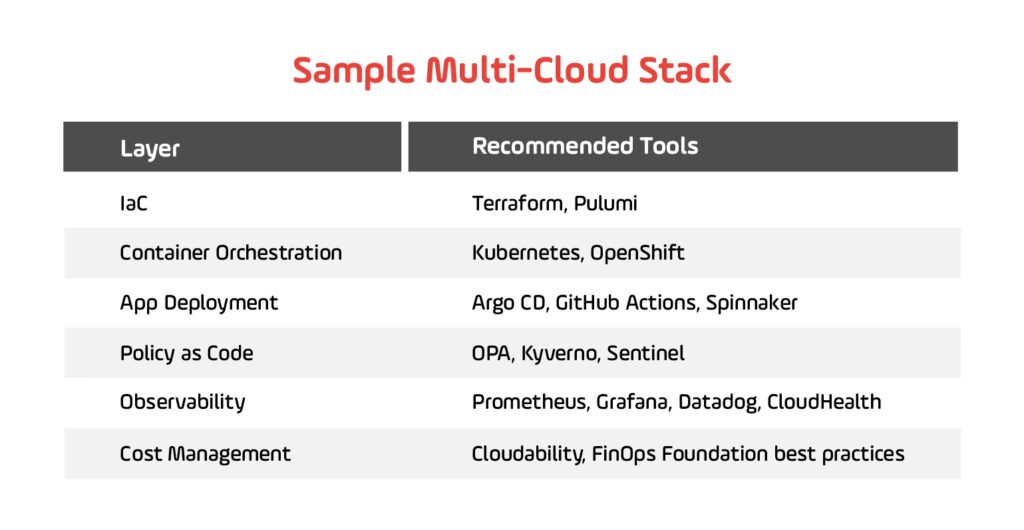
3. Security and Compliance Strategy
Multi-cloud increases your attack surface and creates policy fragmentation if not managed carefully.
Key actions:
- Unify IAM (Identity & Access Management) with tools like Okta or Azure AD.
- Use centralized logging and SIEM platforms (e.g., Datadog, Splunk, or Elastic Security).
- Encrypt everything—in transit and at rest—with cloud-native or 3rd-party tools (e.g., HashiCorp Vault).
Don’t forget compliance automation—especially for frameworks like GDPR, HIPAA, and ISO 27001.
Pro Tip: Create a Security Mesh strategy to enforce consistent security policies across all cloud environments.
4. Skills and Team Maturity
Managing multiple clouds demands broad expertise across platforms, services, and deployment patterns.
Ask yourself:
- Do we have engineers fluent in AWS, Azure, and GCP?
- Can our DevOps team write and maintain cross-cloud Terraform modules?
- Do we have a Cloud Center of Excellence (CCoE) or FinOps team?
If not, investing in training, hiring, or partnering with a cloud consulting firm like Growin becomes essential.
Explore our training-friendly tech guides, like:
https://www.growin.com/blog/mastering-net-and-c-your-complete-12-step-guide-to-success/
5. Monitoring, Observability, and Cost Visibility
In multi-cloud setups, observability is not optional—it’s critical.
Key tools and platforms:
- Prometheus + Grafana: For open-source metrics collection and dashboards.
- New Relic / Datadog / Dynatrace: SaaS observability platforms with cross-cloud support.
- CloudHealth by VMware or Apptio Cloudability: For multi-cloud cost visibility and FinOps.
Bonus Insight: Implement cost guardrails early—like budgets, quotas, alerts, and chargebacks—to avoid runaway bills.
6. Application Architecture and Portability
Legacy monolithic apps often don’t fit well in a multi-cloud world. Cloud-native, loosely coupled, microservices-based architectures are better suited.
Consider:
- Breaking down monoliths into services that can be deployed independently.
- Using containerization and CI/CD pipelines for portability and agility.
- Implementing service meshes (e.g., Istio or Linkerd) for secure, consistent inter-service communication.
7. Governance and Policy Management
Consistency is the name of the game. You’ll need to:
- Standardize provisioning (with IaC templates).
- Centralize audit logging.
- Apply tagging and labeling across all providers.
- Enforce least privilege access and define guardrails using policy-as-code (e.g., with Open Policy Agent).
Future Trends: What’s Next for Multi-Cloud?
IMAGEM NUVEM
As we progress through 2025, multi-cloud strategies are becoming increasingly sophisticated, influenced by technological advancements, regulatory shifts, and evolving business needs. Here’s an in-depth look at the emerging trends:
1. Sovereign Cloud and Digital Autonomy
Geopolitical tensions and data sovereignty concerns are prompting organizations, especially in Europe, to prioritize sovereign cloud solutions. Companies like SAP are expanding their sovereign cloud services across Europe and into Asia to address these concerns. Similarly, European firms are reevaluating their cloud provider choices amid trade tensions, with a growing emphasis on strategic autonomy
2. AI-Driven Cloud Security and Automation
The integration of artificial intelligence (AI) into cloud security is becoming paramount. Google’s planned acquisition of cybersecurity startup Wiz for $32 billion underscores the importance of AI-driven security solutions in managing complex multi-cloud environments. These advancements aim to enhance threat detection, automate responses, and ensure consistent policy enforcement across diverse cloud platforms.
3. Edge Computing and the Cloud Continuum
The proliferation of Internet of Things (IoT) devices and the need for real-time data processing are driving the adoption of edge computing. By processing data closer to its source, edge computing reduces latency and bandwidth usage. This trend is leading to a more distributed cloud architecture, often referred to as the “cloud continuum,” where services seamlessly operate across centralized and decentralized infrastructures.
4. Industry-Specific Cloud Solutions
Cloud providers are increasingly offering tailored solutions for specific industries, such as healthcare, finance, and manufacturing. These vertical clouds come pre-configured with compliance standards, data models, and AI workflows, enabling faster deployment and time-to-value for businesses.
5. Sustainability and Green Cloud Initiatives
Environmental concerns are influencing cloud adoption decisions. Organizations are seeking cloud providers that demonstrate a commitment to sustainability through energy-efficient data centers and transparent carbon footprint reporting. This focus on green cloud computing aligns with broader corporate social responsibility goals and regulatory requirements.
6. Enhanced Cloud Marketplaces and Usage-Based Pricing
Cloud marketplaces are evolving to support more complex configurations and offer tools for seamless integration across multiple cloud providers. There’s a noticeable shift toward usage-based pricing models, allowing businesses to pay based on actual consumption, thus optimizing costs and reducing waste.
Bringing It All Together: Is Multi-Cloud Right for You?
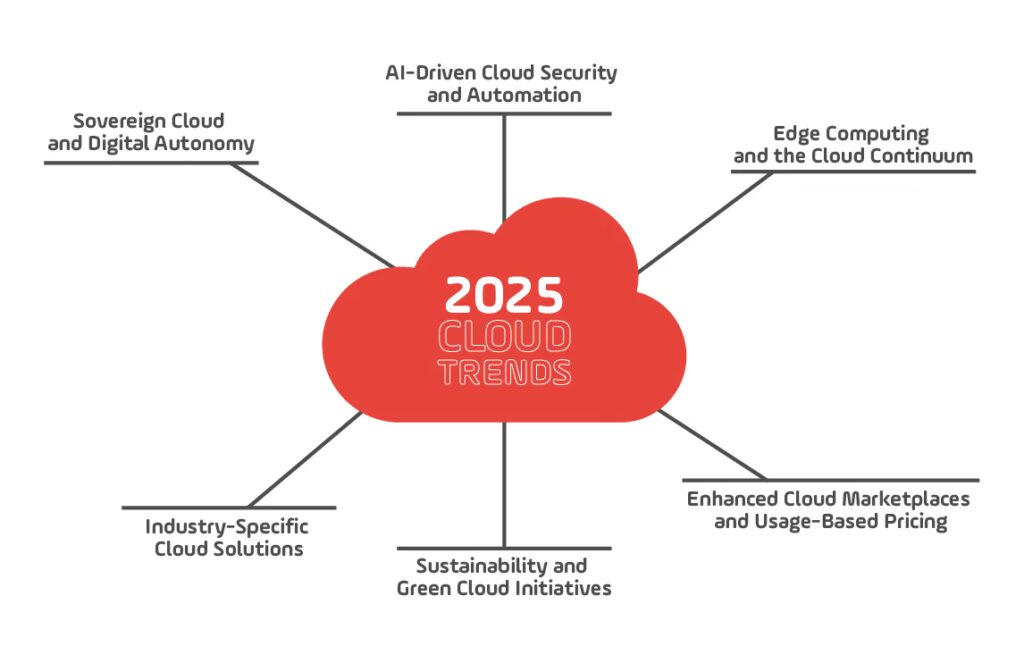
In 2025, multi-cloud is no longer just an enterprise buzzword—it’s a strategic decision shaping how businesses build, deploy, and scale in the cloud.
The advantages are clear:
- Greater flexibility.
- Access to best-in-class tools.
- Improved resilience and compliance.
But so are the challenges:
- Complexity in orchestration.
- Heightened security needs.
- The demand for specialized skills and tooling.
At Growin, we’ve helped businesses across industries turn complexity into opportunity—through thoughtful planning, tailored engineering, and the right tooling from day one. Whether you’re just beginning to explore cloud options or are deep into a multi-cloud migration, success depends on strategy, clarity, and constant optimization.
So—is multi-cloud right for you?
If you’re aiming to build resilient, scalable, and globally compliant digital products, the answer might very well be yes. But only if you’re ready to back it up with the right talent, technology, and trusted partners.
Curious what a tailored multi-cloud roadmap would look like for your team?
Let’s talk.


